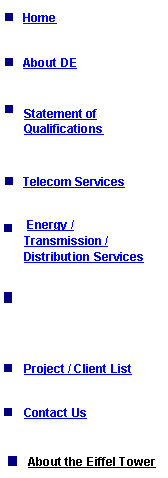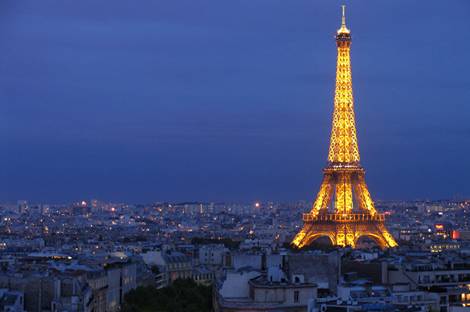
|
The Eiffel Tower - A Tower for the Ages |
|
Over the last couple decades, DE has had many inquiries about the Eiffel Tower. Here are a few little known facts (current as of 1997):
The tower was built to commemorate the 100th anniversary of the French Revolution and was the center-piece of the Exposition Universelle of 1889. Construction began in January 1887 and was completed on 31 March 1889.
The Eiffel Tower consists of 9,547 tons of wrought iron comprising 18,000 members, and has 2.5 million rivets. Individual structural components have a maximum assembled weight of 3 tons. The tower is supported by concrete caissons measuring 50 feet long, 22 feet wide, and 7 feet deep. Forty-five (45) tons of zinc-rich paint are applied to the tower every 7 years. The iron arch under the first platform level serves no structural purpose and was added to the tower after the platform was in place.
The Eiffel Tower is privately owned and has always been operated for profit as a commercial enterprise. Immediately following its completion, people were charged a fee to travel to various heights on the tower. A trip to the top cost 5 francs, and 1.9 million people paid for the privilege in the first year following its completion. Seventy-five percent (75%) of the construction cost was recovered in the first year. The tower now also serves as a communication structure and supports radio and television broadcast equipment.
A.G. Eiffel was also the lead engineer for many more great works in his lifetime. Some noteworthy projects include: the Garabit Bridge which rises 400 feet above the Truyere River, the Nice Observatory, the Bon Marche department store. Eiffel designed and patented the lock gates used in the Panama Canal. Eiffel developed a new method of pile driving and designed a great many bridges, ports, and buildings during his long illustrious career. A.G. Eiffel was born in Dijon, France on 15 December 1832. Eiffel died at the age of 93 on 27 December 1923 at his mansion on Rue Rabelais, Paris.
|


